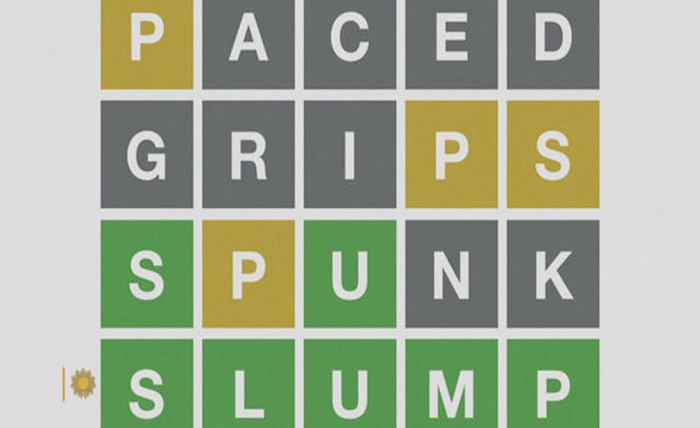Mastering the 7-Letter Wordle: Tips, Strategies, and Best Practices for Success

Wordle has taken the internet by storm, with players worldwide racing against the clock to solve daily word puzzles. While the traditional 5-letter Wordle is more common, the 7-letter Wordle offers a more challenging experience for those who want to stretch their linguistic muscles. In this post, we’ll dive deep into mastering the 7-letter Wordle, providing you with strategies, tips, word lists, and FAQs that will boost your puzzle-solving prowess.
Subheading What Is 7-Letter Wordle?
7-Letter Wordle is a variant of the popular Wordle game, where the objective is to guess a 7-letter word within six attempts. Each guess provides feedback on which letters are correct and whether they’re in the right position. The game follows the same principles as the original, but the increased word length makes it a greater test of vocabulary and problem-solving.
Subheading How 7-Letter Wordle Differs from Traditional Wordle
The key difference between the traditional Wordle and 7-letter Wordle is, of course, the word length. In traditional Wordle, players guess 5-letter words, which offers fewer possibilities and can sometimes be easier to solve. On the other hand, a 7-letter Wordle introduces more complexity, as it includes a broader range of possible words and combinations. This can make it more fun and engaging for those who enjoy a more challenging puzzle.
Subheading Why You Should Play 7-Letter Wordle
Playing the 7-letter Wordle can help improve your vocabulary, sharpen your cognitive skills, and provide a fun mental workout. It can also be an entertaining daily challenge, keeping your mind active while helping you discover new words. Wordle enthusiasts often find that the 7-letter version offers a longer and more satisfying gameplay experience.
Subheading Best Strategies to Win 7-Letter Wordle
Winning at 7-letter Wordle requires a combination of skill, luck, and strategy. Here are some of the best strategies to help you succeed:
- Start with Common Vowels and Consonants: In English, vowels such as A, E, and I, and consonants such as T, R, and N are common. Start your guesses with words that include these letters.
- Use Process of Elimination: After each guess, use the feedback to eliminate possibilities. Pay attention to which letters are correctly placed and which are not in the word at all.
- Look for Letter Patterns: Many English words have common patterns, such as consonant-vowel-consonant arrangements or repeating consonants. Keep an eye out for such patterns.
- Avoid Rare Letters Initially: Letters like Z, X, and Q are uncommon in most 7-letter words, so it’s best to avoid them in your first few guesses unless you have a strong hunch.
- Try Multiple Word Lists: Familiarize yourself with lists of common 7-letter words. This can give you a leg up when you’re stuck.
Subheading Common 7-Letter Words to Use in Wordle
Having a ready list of common 7-letter words can help improve your performance in the game. Some popular 7-letter words you might want to consider include:
- Example 1: “Teacher”
- Example 2: “Reading”
- Example 3: “Writing”
- Example 4: “Dancing”
- Example 5: “Running”
These words are good starting points because they contain commonly used letters and can help you eliminate multiple options in one go.
Subheading Using Vowels Effectively in 7-Letter Wordle
Vowels are critical in any word game. Here’s how you can use vowels more effectively in 7-letter Wordle:
- Start with Words Heavy in Vowels: Words like “easiest” or “edition” can provide good insights early in the game, helping you pinpoint the vowels in the word.
- Mix Vowels and Consonants: Alternating vowels and consonants can help you break down more possibilities with each guess.
- Keep an Eye on Uncommon Vowels: Letters like “U” or “Y” can sometimes be tricky, so use them wisely once you’ve narrowed down your guesses.
Subheading Wordle’s Feedback System
One of the keys to mastering Wordle is understanding how the feedback system works:
- Green: The letter is correct and in the right position.
- Yellow: The letter is in the word but in the wrong position.
- Gray: The letter is not in the word at all.
Use this feedback to guide your next guesses strategically. Focus on the green and yellow letters to narrow down your possibilities, while avoiding gray ones altogether.
Subheading Importance of Starting Words in 7-Letter Wordle
The starting word is crucial in 7-letter Wordle. A good starting word can give you early clues about the letters and their positions. Choose a word that contains common vowels and consonants to maximize your chances of getting useful feedback on your first guess.
Example starting words:
- “Letters”
- “Answers”
- “Cleaner”
- “Writers”
These words cover a range of vowels and consonants, giving you a better chance of narrowing down possibilities with your next guess.
Subheading Practice Makes Perfect: The Role of Experience
The more you play 7-letter Wordle, the better you will get. Experience helps you recognize common word patterns, frequently used letters, and optimal strategies for guessing. You’ll begin to intuitively understand which letters and word structures are most likely to appear, making the puzzle-solving process more natural over time.
Subheading Wordle Variants: Exploring Other Word Games
If you love Wordle but want even more variety, there are other word-based games you can try, such as:
- Crossword Puzzles: Traditional but always fun.
- Scrabble: A classic that’s perfect for sharpening your word-building skills.
- Boggle: A fast-paced word game to find as many words as possible.
- Spelling Bee: A New York Times game that challenges players to create words from a set of letters.
Exploring these games can help enhance your vocabulary and improve your performance in 7-letter Wordle.
Subheading Why 7-Letter Wordle Is Perfect for Vocabulary Building
Playing 7-letter Wordle can significantly improve your vocabulary. You’ll encounter words you may not use daily, pushing you to expand your knowledge and language skills. Plus, the challenge of forming 7-letter words encourages you to think more critically about letter combinations and word structures.
Subheading Tips for Maintaining Focus and Solving Faster
Solving a 7-letter Wordle can take time, but staying focused can help you solve it faster. Here are some tips:
- Stay Calm: Don’t let frustration get the better of you if you don’t get it right away.
- Break the Word into Parts: Look for root words, prefixes, or suffixes.
- Take Breaks: If you’re stuck, walk away for a few minutes. Often, fresh eyes help spot something new.
Conclusion
7-letter Wordle offers an exciting twist on the traditional Wordle game, providing a deeper challenge and an opportunity to expand your vocabulary. By applying the strategies and tips shared in this post, you’ll not only improve your game but also sharpen your mind and enjoy the process. Whether you’re playing for fun or aiming to master the game, remember that practice and patience are key to success. Happy puzzling!
FAQs
- How can I improve at 7-letter Wordle?
Start with common vowels and consonants, use process of elimination, and practice regularly to build pattern recognition. - What are good starting words for 7-letter Wordle?
Words like “letters,” “answers,” and “writers” make great starting guesses, as they contain common vowels and consonants. - How is 7-letter Wordle different from the traditional Wordle?
The main difference is the word length. The 7-letter version requires more strategy and offers a greater challenge compared to the 5-letter Wordle. - What should I do if I get stuck in 7-letter Wordle?
Take a break, review the feedback carefully, and look for patterns in letters you haven’t used yet. - Can playing 7-letter Wordle improve my vocabulary?
Yes! The game helps players encounter and learn new words, which enhances vocabulary and language skills.







